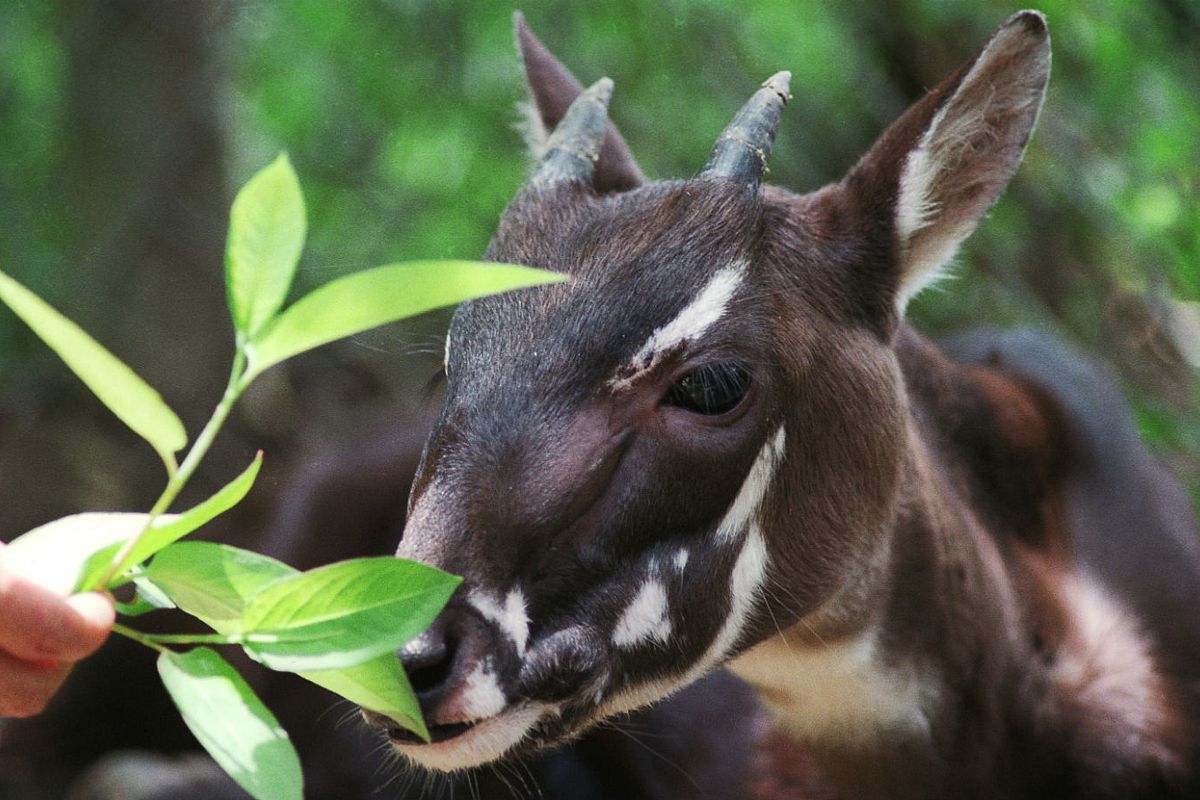
The saola, often called the "Asian unicorn," is one of the world's rarest and most mysterious animals. Found only in the Annamite Range of Vietnam and Laos, this elusive creature was first discovered by scientists in 1992. Despite its nickname, the saola is not a unicorn but a type of bovine related to cattle, goats, and antelopes. Its striking long, straight horns and white facial markings make it unique. Unfortunately, the saola faces severe threats from habitat loss and poaching, making conservation efforts critical. Want to learn more about this fascinating animal? Here are 26 intriguing facts about the saola that will leave you amazed.
What is a Saola?
The Saola, also known as the Asian unicorn, is one of the rarest and most mysterious animals on Earth. Found only in the Annamite Range of Vietnam and Laos, this elusive creature has fascinated scientists and animal lovers alike.
- The Saola was first discovered in 1992, making it one of the most recent large mammal discoveries.
- Its name, "Saola," means "spindle horns" in Vietnamese, referring to its long, straight horns.
- Saolas are part of the Bovidae family, which includes cows, goats, and antelopes.
- They are often called the "Asian unicorn" because of their rarity and elusive nature.
- Saolas have white markings on their faces and large, dark eyes, giving them a gentle appearance.
Habitat and Distribution
Saolas are native to a very specific region, making their habitat crucial for their survival. Understanding where they live helps in conservation efforts.
- Saolas are found only in the Annamite Range, a mountain range that runs along the border of Vietnam and Laos.
- They prefer dense, evergreen forests with plenty of rivers and streams.
- The Saola's habitat is threatened by deforestation and human encroachment.
- They are also affected by the construction of roads and other infrastructure projects in their habitat.
- Conservationists are working to protect the Saola's habitat through various initiatives.
Physical Characteristics
The Saola's unique physical traits set it apart from other animals. These characteristics are not just for show; they play a role in its survival.
- Saolas have two parallel horns that can grow up to 20 inches long.
- Their fur is a dark brown color, which helps them blend into the forest.
- They have a distinctive white stripe running down their back.
- Saolas have large scent glands on their faces, which they use to mark territory.
- Their legs are short and sturdy, perfect for navigating the rugged terrain of their habitat.
Behavior and Diet
Understanding the behavior and diet of Saolas can provide insights into how they survive in the wild. These aspects are crucial for their conservation.
- Saolas are shy and elusive, making them difficult to study in the wild.
- They are believed to be solitary animals, coming together only to mate.
- Saolas are herbivores, feeding on leaves, shrubs, and grasses.
- They have a preference for plants found near rivers and streams.
- Saolas are most active during the early morning and late afternoon.
Conservation Status
The Saola is critically endangered, and efforts are being made to save this rare species. Understanding their status helps in creating effective conservation strategies.
- The Saola is listed as critically endangered by the International Union for Conservation of Nature (IUCN).
- Fewer than 100 Saolas are believed to be left in the wild.
- Poaching and habitat loss are the biggest threats to their survival.
- Conservationists have set up protected areas in Vietnam and Laos to help save the Saola.
- Captive breeding programs are being considered as a last resort to prevent extinction.
- Public awareness campaigns are crucial for the Saola's conservation, as many people are unaware of its existence.
The Saola's Future
The Saola, often called the Asian unicorn, remains one of the most elusive creatures on Earth. With fewer than 100 individuals believed to exist, their survival hangs by a thread. Habitat loss and poaching are the primary threats. Conservation efforts are crucial to prevent their extinction. Protecting their habitat in the Annamite Mountains and enforcing anti-poaching laws can make a difference.
Local communities play a vital role in these efforts. By raising awareness and promoting sustainable practices, we can help ensure the Saola's survival. Every small action counts. Supporting organizations dedicated to Saola conservation can also contribute to their future.
The Saola's plight is a reminder of the delicate balance in nature. Preserving this unique species is not just about saving an animal; it's about maintaining the biodiversity that keeps our planet healthy. Let's act now before it's too late.
Was this page helpful?
Our commitment to delivering trustworthy and engaging content is at the heart of what we do. Each fact on our site is contributed by real users like you, bringing a wealth of diverse insights and information. To ensure the highest standards of accuracy and reliability, our dedicated editors meticulously review each submission. This process guarantees that the facts we share are not only fascinating but also credible. Trust in our commitment to quality and authenticity as you explore and learn with us.
